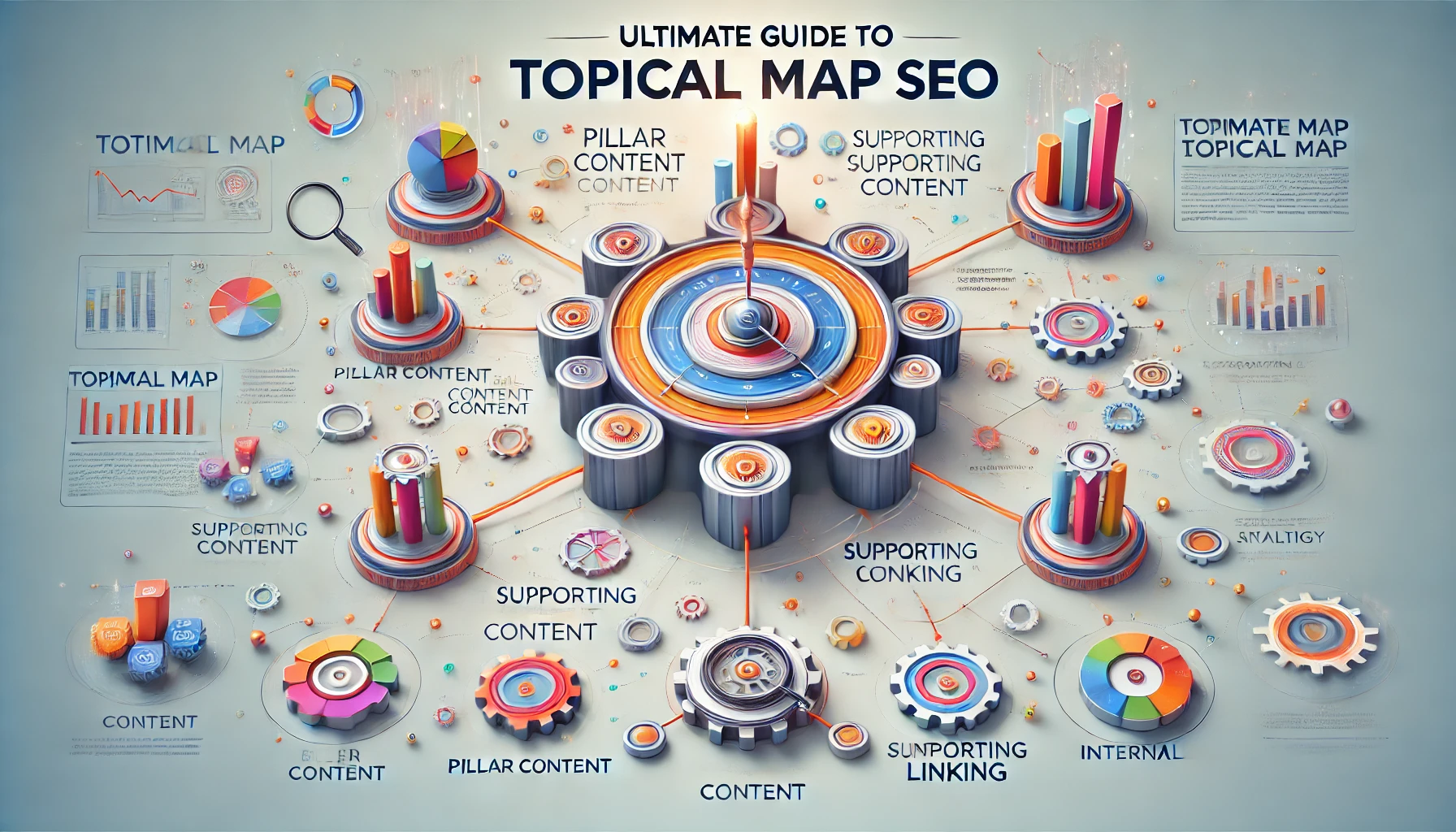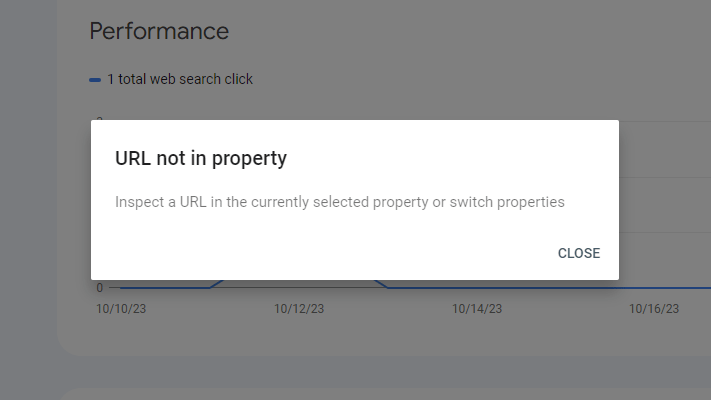Ultimate Guide to Topical Map SEO
Hey there, fellow SEO enthusiasts! I'm Abdullah Nouman; SEO Specialist at WpConsults. Today, we're diving deep into the world of Topical Map SEO.
If you've been wondering how to take your search engine optimization game to the next level, you're in for a treat. Buckle up as we explore this powerful strategy that's revolutionizing the way we approach SEO.

Introduction to Topical Map SEO
Remember the days when keyword stuffing was all the rage? Well, those days are long gone.
Search engines have gotten smarter, and so have SEO strategies. Enter Topical Map SEO – a game-changer in the world of digital marketing.
Table of Contents
What is a Topical Map?
Think of a topical map as a roadmap for your website's content. It's a strategic plan that organizes your site's information around key topics and subtopics.
Instead of focusing solely on individual keywords, a topical map helps you build a comprehensive structure that showcases your expertise in a particular area.
Why Topical Maps are Crucial for SEO Success

- Improved Search Engine Understanding: Search engines love context. By creating a well-structured topical map, you're essentially holding up a big sign that says, "Hey Google, this is what we're all about!"
- Enhanced User Experience: When your content is organized logically around topics, visitors can easily find what they're looking for. Happy users = happy search engines.
- Increased Authority: By covering topics in-depth, you position yourself as an authority in your niche. This can lead to better rankings and more organic traffic.
- Long-Tail Keyword Coverage: A good topical map naturally incorporates a wide range of long-tail keywords, helping you capture more diverse search traffic.
How Search Engines Use Topical Maps
Search engines have evolved to understand the relationships between different pieces of content. When you implement a topical map, you're helping search engines connect the dots between your various pages and posts.
This interconnected web of information signals to search engines that you have comprehensive coverage of a topic, potentially boosting your overall authority in that area.
Differences Between Keyword Research and Topical Maps in SEO
While keyword research is still important, topical mapping takes things a step further. Here's a quick comparison:
| Keyword Research | Topical Maps |
|---|---|
| Focuses on individual terms | Focuses on broader topics and subtopics |
| Can lead to disconnected content | Creates a cohesive content structure |
| May miss contextual relationships | Emphasizes semantic relationships |
| Can result in keyword cannibalization | Reduces internal competition |
4 Core Elements of a Topical Map
A solid topical map consists of several key components:
- Pillar Content: These are your main topic pages that provide a comprehensive overview.
- Cluster Content: Supporting content that dives deeper into specific aspects of your main topics.
- Internal Links: The connective tissue that holds your topical map together.
- Semantic Relevance: Ensuring your content covers related concepts and terms.
The Role of Semantic SEO in Topical Mapping
Semantic SEO is all about understanding the intent and context behind search queries. It goes hand-in-hand with topical mapping by helping you:
- Identify related topics and subtopics
- Use natural language and synonyms
- Create content that answers user questions comprehensively
Learn More About Semantic SEO
By incorporating semantic SEO principles into your topical map, you're creating content that's not just keyword-rich, but also highly relevant and valuable to your audience.
Creating a Topical Map for SEO: Step-by-Step Guide
Ready to create your own topical map? Let's break it down into manageable steps:
Step 1: Analyzing Your Niche and Audience
Before you start mapping, you need to know your terrain. Dive deep into your niche and get to know your audience inside out.
What are their pain points? What questions are they asking? Use tools like Google Analytics, social media insights, and customer feedback to gather this valuable information.
Step 2: Conducting Comprehensive Topic Research
Now it's time to roll up your sleeves and do some serious topic research. Use tools like Ahrefs Content Explorer or SEMrush Topic Research to uncover popular topics and subtopics in your niche. Look for:
- High-volume search terms
- Related questions
- Trending topics
Step 3: Organizing Topics into Content Clusters
With your research in hand, start grouping related topics together. This is where your topical map begins to take shape. Create a hierarchy with broad topics at the top and more specific subtopics branching out below.
Here's a simple example for a fitness website to illustrate the relationship between Main topic Fitness, its components, and their subcomponents:
| Category | Subcategories |
|---|---|
| Fitness (Main topic) | Strength Training, Cardio, Nutrition |
| Strength Training ( Sub topic A) | Weightlifting, Bodyweight Exercises |
| Cardio (Sub topic B) | Running, Cycling |
| Nutrition (Sub topic C) | Meal Planning, Supplements |
Let's Visualize Your Fitness Content Goals!
Imagine a tree.
- The trunk is Fitness.
- The branches are Strength Training, Cardio, and Nutrition.
Strength Training has its own branches:
- Weightlifting
- Bodyweight Exercises
Cardio also has its branches:
- Running
- Cycling
And Nutrition has its branches:
- Meal Planning
- Supplements
So, to create topical map or content cluster for Fitness, you need to work on all three main areas: Strength Training, Cardio, and Nutrition.
Step 4: Mapping Content to Search Intent
For each topic and subtopic, consider the user's search intent. Are they looking for information, trying to make a purchase, or seeking a specific solution? Tailor your content to match these intents:
- Informational: "How to start weightlifting"
- Transactional: "Best running shoes for beginners"
- Navigational: "Planet Fitness near me"
Contact Us for creating perfect SEO optimized topical map for your website.
Step 5: Creating Pillar Pages and Cluster Content
Now it's time to start creating content. Begin with your pillar pages – comprehensive guides that cover the main topics in depth. Then, create supporting cluster content that links back to these pillar pages.
Step 6: Using Internal Linking Strategies
Internal linking is the secret sauce that brings your topical map to life. Link from your cluster content to your pillar pages and vice versa. This helps users and search engines navigate your content ecosystem.
Step 7: Monitoring and Updating Your Topical Map
SEO is an ongoing process, and your topical map should evolve with your niche and audience. Regularly review your analytics, track your rankings, and update your content to keep your topical map fresh and relevant.
Topical Maps for Various Types of Websites
Different types of websites can benefit from topical maps in unique ways:
Topical Maps for Blogs and Content Websites
For content-heavy sites, focus on creating comprehensive pillar content that serves as a hub for related articles. Use your blog posts to dive deep into specific aspects of your main topics.
Topical Maps for E-commerce Websites
E-commerce sites can structure their topical maps around product categories, buyer's guides, and educational content. For example:
This diagram represents the hierarchy in a clear and visual way:
- Home Appliances is the main category.
- It branches into Kitchen Appliances (A) and Laundry Appliances (B).
- Kitchen Appliances further branches into Refrigerators and Dishwashers.
- Refrigerators then branches into Side-by-Side Refrigerators and French Door Refrigerators.
- Dishwashers branches into Built-in Dishwashers and Portable Dishwashers.
Topical Maps for News and Media Websites
News sites can create topical maps around ongoing stories or evergreen topics. Use tags and categories to link related content and provide context for developing news items.
Best Tools for Creating an SEO Topical Map
To help you create and manage your topical maps, here are some top-notch tools:
- Ahrefs Content Explorer: Great for discovering topics and analyzing their potential.
- SEMrush Topic Research: Offers in-depth topic analysis and content ideas.
- Surfer SEO: Helps optimize your content for semantic relevance.
- MarketMuse: Provides advanced topic modeling and content planning.
- SEOWriting.ai: Uses AI to generate topical maps quickly.
Case Studies: Successful Topical Maps in Action
Let's look at a real-world example of topical mapping success:
Healthline.com: This health information website has mastered the art of topical mapping. Take their Nutrition section as an example. They've created comprehensive pillar content on topics like "The 20 Best Foods to Eat for Breakfast" and linked it to more specific articles on individual foods and nutrients.
Common Mistakes to Avoid When Creating Topical Maps
Watch out for these pitfalls:
- Neglecting user intent: Always put your audience's needs first.
- Creating isolated content: Ensure all your content is interconnected.
- Ignoring mobile users: Make sure your topical structure works well on all devices.
- Forgetting to update: Keep your topical map fresh and relevant.
Future of Topical Maps in SEO
As search engines continue to evolve, topical maps will likely become even more important. We can expect to see:
- More emphasis on entity-based search
- Increased importance of natural language processing
- Greater rewards for comprehensive, authoritative content
Topical map is more important than domain authority, specially for new sites
While domain authority (DA) is a valuable metric, it's often overlooked in favor of topical maps when it comes to new websites. Domain authority takes time to build, as it's influenced by factors like backlinks, age, and overall site quality. For a fledgling website, these metrics may be limited.
Contact Us for creating perfect SEO optimized topical map for your website.
FAQs About Topical Maps and SEO
Q: How long does it take to see results from a topical map strategy?
A: It varies, but typically you can start seeing improvements in 3-6 months.
Q: Can small websites benefit from topical mapping?
A: Absolutely! Even small sites can use topical mapping to organize their content effectively.
Q: How often should I update my topical map?
A: Review your map quarterly, but be prepared to make adjustments as your industry evolves.
Conclusion: The Power of Topical Maps in SEO Strategy
Topical Map SEO is more than just a trend – it's a fundamental shift in how we approach content creation and organization. By implementing a solid topical map strategy, you're not just optimizing for search engines; you're creating a better, more valuable experience for your users.

Remember, the key to success with topical mapping is to stay focused on your audience's needs while maintaining a comprehensive and interconnected content structure. So, are you ready to map your way to SEO success?




